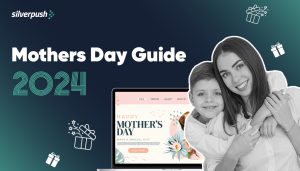Beyond Black and White: The True Color of Brand Safety | 07 Jul, 2020

Over the past few years, a lot of brand safety issues have surfaced that have led marketers to review their brand safety measures. The current coronavirus crisis has intensified the brand safety woes of marketers, as most of the brands don’t want ad adjacency to the content dealing with morbidity and mortality.
Common brand safety methods used by marketers include blacklisting and whitelisting. Blacklisting involves avoiding the placement of ads against content containing specific blocked keywords. For video content, a blocked keyword is searched in the topic, title, description, and metadata. In contrast, whitelisting enlists content that has been labeled as safe for ads to be placed.
How Common Brand Safety Methods Impact an Ad Campaign?
The keyword-based blacklisting method is in reality not as effective as it seems to be. It is marred by under and over-blocking of content. Research shows that because of the use of keyword blacklists, more than half of the safe stories published on the major news platforms are being incorrectly tagged as brand unsafe.

The keyword-based blacklisting methods lead to the blocking of completely innocuous content. This is due to its inability to recognize the subtleties in context, or more specifically, the actual context in which a term is employed.
For example, if “alcohol” is the blocked keyword, then the blacklisting method will not only mark a video featuring drunk and driving as unsafe but will also add a video featuring a recipe using alcohol to the list.
Another problem with blacklisting is that universal blacklists cannot be created. They have to be regularly updated and modified according to the brands’ requirements, current happenings, events, the latest news, countries, languages, and cultures. There is also a requirement to tweak blacklists regularly on the basis of current safe content consumption patterns of consumers so that increased reach for the advertising campaigns can be achieved.
In general, the implementation of the keyword-based blacklisting approach requires a lot of fine-tuning. But this approach hinders marketers from getting optimal results from their advertising campaigns.
A whitelist provides a safe and trusted environment for brands to advertise within. Curating a whitelist for advertising on a video platform involves tagging unsafe content at the keyword, topic, video, and channel levels. Video-level tagging helps brands to filter out unsafe videos. Brands do not have to blacklist an entire channel just because of one or a few unsafe videos.
Similar to keyword blacklists, whitelists also need to be regularly updated, otherwise, the campaigns will not witness an increase in reach, and brands will miss new opportunities to engage consumers with their ads.
Creation of whitelists is not an easy process; it requires a lot of curation by marketers and is time-consuming and expensive. As the whitelisting method limits the number of videos against which ads can be placed, marketers are unable to take full advantage of the true potential of huge video hosting platforms like YouTube. The campaign’s reach gets reduced and the right audience does not get fully targeted.
Contextual Targeting: An Alternative for Keyword-based Targeting
The above-mentioned brand safety methods provide only suboptimal brand safety and have significant limitations. Keeping these points in mind, advertisers have been shifting to contextual targeting. This approach allows brand safety with the help of AI and computer vision.
In contextual targeting, ads are deployed based on the content consumed by the user. Computer vision can accurately detect contexts in videos such as faces, objects, logos, on-screen text, emotions, scenes, and activities. Thus, it can effectively detect unsafe or harmful contexts in videos.
Amid the coronavirus pandemic, computer vision-powered brand safety platforms enable brands to selectively block ads against mortality-related coronavirus content, while allowing ad placement against positive coronavirus content. Thus, brands can safely capitalize on the news content; this is not possible with keyword blacklists that fail to understand the true context in which the keyword “coronavirus” is being used.
Advertisers can successfully prevent ad placement against known harmful categories by employing AI-based contextual brand safety solutions, but they can also identify inappropriate circumstances that are specific to a brand.
Also read, How brands are navigating brand safety?
Conclusion
Ensuring brand safety without killing the reach is the top priority for advertisers but keyword-based targeting doesn’t allow it. Whereas, AI and computer vision enables marketers to go beyond blacklists and whitelists in order to achieve brand safety in its true color without limiting the reach. Also, ad campaigns achieve better KPIs which results in better ROI.

BLOGS
Crafting a Winning Mother’s Day Advertising Strategy for 2024: Insights and Trends
As we approach Mother’s Day 2024, brands must prepare to adapt to changing consumer needs and preferences. Considering the current market dynamics and consumer behavior, it's crucial to develop a successful Mother’s Day campaign that extends beyond the day itself. Here's a detailed roadmap to navigating the Mother’s Day market, ...

BLOGS
Win Gold for Summer Olympics 2024 with AI-Powered Video Ads
The Paris Olympic Games 2024 is not merely a gathering of the world’s finest athletes, but it’s a testament to unity, diversity, and the pinnacle of human excellence. The grand spectacle sparks surges in consumer engagement and purchase intent worldwide. Whether you operate shoe boutiques in Ohio, bicycle repair shops ...

BLOGS
Interactive Video Ads: Turn Passive Viewers to Active Participants
Interactive video ads signify a revolutionary change in digital advertising, turning passive spectators into dynamic participants. Through the smooth integration of interactive elements such as touchpoints, quizzes, and clickable features, these ads present an unparalleled avenue for brands to connect with their audience. Viewers are no longer just observers but ...











